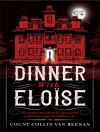In ‘Melmoth the Wanderer, ‘ Charles Robert Maturin weaves a complex tapestry of gothic horror and existential philosophy, centered around the eponymous character, Melmoth, who searches for a soul to exchange for his own eternal torment. This novel employs a rich, ornate literary style, exemplifying early 19th-century Romanticism, while also engaging with the darker currents of the Gothic genre. Maturin’s narrative structure is innovative, featuring multiple layers of storytelling and a series of interwoven tales that explore themes of despair, transgression, and the search for redemption in an increasingly alienated world. This intricate interplay of form and content situates the work within the broader literary context of the time, reflecting the anxieties of the Romantic era and the questioning of human existence and morality. Charles Robert Maturin, an Irish writer and clergyman, was influenced by his personal struggles and the political climate of his time. His own experiences with despair, alongside significant intellectual influences such as Sir Walter Scott and Lord Byron, shaped his ability to articulate the complexities of the human condition. Maturin’s investment in theological questions and philosophical inquiries particularly informed the creation of Melmoth, embodying the tensions of faith and doubt prevalent in his life. ‘Melmoth the Wanderer’ is a compelling recommendation for readers intrigued by the intersection of gothic literature and philosophical inquiry. Its haunting prose and profound themes invite contemplation and challenge readers to grapple with the essence of humanity. Readers drawn to richly layered narratives will find in Maturin’s work a striking exploration of the darker sides of desire, despair, and the eternal quest for meaning.
A propos de l’auteur
Charles Robert Maturin (1782–1824) was an Irish clergyman and novelist, now best remembered for his contribution to the Gothic literature genre, particularly through his seminal work ‘Melmoth the Wanderer’. Born in Dublin to a Huguenot family, Maturin’s literary career was pursued alongside his duties as a curate at Loughrea, County Galway, and later at St. Peter’s church in Dublin. ‘Melmoth the Wanderer’, published in 1820, is a complex narrative that explores themes of damnation, the occult, and existential despair. The novel’s titular character, John Melmoth, trades his soul for an extra century of life and spends his extended years searching for someone who will take over the pact for him. Maturin’s style is characterized by a sophisticated marriage of the horrific and erudite, building upon the legacy of Horace Walpole and Ann Radcliffe, and having an enduring influence on later writers such as Edgar Allan Poe and Honoré de Balzac. Despite contemporary criticism for its verbosity and lurid elements, Maturin’s work has been re-evaluated by modern scholarship as a significant literary accomplishment, notable for its psychological depth and innovative narrative structure. His impact on Gothic fiction and the Romantic movement encapsulates him as a figure of considerable literary importance within the canon of 19th-century literature.












